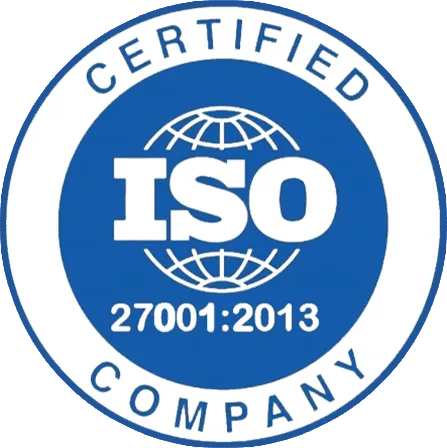Hey, B2B ecommerce business owners! Want to accelerate your traffic, conversion rates, average order value, and retention rates? Then be ready to get advanced level best practices that are followed by a large B2B marketplaces and wholesale stores.
We studied a few best B2B ecommerce stores like Alibaba, Indiamart, Amazon Business, etc that have been killing in terms of online B2B selling. After close evaluation, we came up with valuable recommendations that can push you closer to your goal of being a popular ecommerce brand.
Here is another enticing fact to optimize your B2B ecommerce brand ~ the forecasted B2B ecommerce sales is projected to reach around $1.5 billion in 2021, a 12% raise from previous year.

So first, let’s dive deeper into the statistics to establish grounds on why you should follow below listed B2B ecommerce best practices.
- Google reported that 50% of B2B online inquiries are made using mobile devices. This percentage is expected to grow as we move forward future
Takeaway: Make your site SEO friendly and mobile responsive. Research popular keywords that are used by your potential B2B ecommerce customers and spread them across your products pages. Simplify your web store navigation to make your user purchase journey hassle-free.
- 91% of consumers are more likely to buy from companies that remember them and provide relevant offers. (Accenture). 69% of B2B buyers are willing to pay more for a personalized experience(Smarter HQ).
Takeaway: Start personalizing your ecommerce store via relevant product recommendation, creating personalized homepage feed, shooting relevant emails and push notifications, customize price based on their loyalty/purchase frequency, run remarketing ads, etc.
- Over 40% of revenue in leading B2B organizations is driven by mobile channels.(Source: BCG)
Takeaway: Make your site mobile-friendly to give frictionless mobile shopping experience to B2B mobile users and unlock the huge revenue potential.
Table of Contents
- 9 B2B ecommerce best practices that give a winning edge to your brand
- 1. Offer seamless registration and account creation
- 2. Offer unique buyer and seller dashboard
- 3. Build comprehensive product pages
- 4. Provide live customer support
- 5. Offer fast and effortless delivery tracking abilities
- 6. Give impeccable B2B mobile shopping experience
- 7. Customize product catalogue and send personalized offers
- 8. Offer flexible payment methods
- 9. Integrate B2B ecommerce platform with all channels
- Final takeaways
9 B2B ecommerce best practices that give a winning edge to your brand
1. Offer seamless registration and account creation
Why should you do it? 11% of internet users would leave an ecommerce store if it asks too much information during the registration process( Forrester Research). Whereas, 88% of users would fill in false information or leave the form blank.
Hence, creating an effortless registration and account creation process is necessary, especially when you have a B2B ecommerce store.
Things to keep in mind while creating account creation?
Decide a specific time for asking customers to register. For example: ask them to register, when they have spent enough time on your ecommerce website
When asking for registration, provide a valid reason behind it. For example, you can say “log-in to claim a first-time purchase discount of Rs 500”
Offer a one-click sign-up experience. Example: “continue with Google account” or “continue with mobile number” or “continue with LinkedIn account”
Ask for additional details later on like their company name, office address, their industry, designation, etc
2. Offer unique buyer and seller dashboard
Why should you do it? 86% of B2B customers prefer using B2B ecommerce site information to order, reorder, manage negotiations, approvals, and check order statuses without contacting sales representatives, as it saves time and money (Mc Kinsey).
How to offer a unique dashboard to both sellers and customers?
StoreHippo ecommerce website builder allows you to allot your sellers and customers a unique dashboard at the time of onboarding. So when they create an account, they are automatically assigned a unique dashboard. Let’s learn about seller’s and customer’s dashboard features:
Features seller's dashboard by StoreHippo
Vendors get a comprehensive view of his/her business like monthly sales insights, revenue earned, traffic, total order, completed/pending orders, inventory availability, etc
From the dashboard, vendors can edit their product listing on your B2B marketplace. For example: they can easily edit prices, stock availability status (in stock or out of stock), product description and images, order statuses, and even more
Features customer’s dashboard by StoreHippo
Customers can view their orders, delivery status, payment status, order summary, warranty slips, tax invoices, etc all at one place
They can also contact support staff to report any damaged or defective items
They can cancel their order or raise an exchange and refund request
Customers can even edit/add billing and shipping addresses from their dashboard
3. Build comprehensive product pages
Why should you do it? Only 2.42% of e-commerce site visits convert into purchases. The one reason for the low conversion rate is lack of product information, which makes customers suspect the item quality and integrity of the seller.
Buyers cannot feel the products while online. That's why it is the responsibility of your B2B ecommerce store to inform customers about the quality of products via words, reviews, videos and images.
How to make a B2B ecommerce product page trustworthy?
- Place high-resolution product images and videos.
Fact: 3D Product Images Increase Conversions by 250%.
2. Enhance Product description with benefits and other technical specifications
3. Clearly laid out wholesale prices per unit (for B2B wholesale stores)
4. Straightforwardly declare the minimum order quantity to place order
5. Discounts and loyalty points for buying high quantities
6. Display Seller/Supplier information with previous sale record
Bonus: Alibaba B2b marketplace explicitly states all the information about the company like their patent, their Trademarks, Main Products, Main markets, factory size, factory location, etc. Alibaba even declares seller historical revenue data coming from various countries (or markets)
7. Embed Enquiry cum negotiation form under each product page.
Tip: Make sure to ask their name, email address, contact number, business name, business location, website url in the form. Also, add an additional “message” box for additional comments.
8. Buyer specific FAQs
Tip: Address all the concerns related to seller, products, returns, refund, exchange, warranty, etc.
4. Provide live customer support
Some B2B ecommerce buyers are more flexible in having online customer support rather than contacting a salesperson. The reason being, live chat is -
Time-saving and convenient
Offer fast resolution to query, whether it about products or price
More personalized solutions
In fact, live chat is a great tool to engage with customers. It is a great way to generate leads and convert those leads into sales.
Best practices for live chat
Use scripts that don’t sound robotic and feel like a person to person communication
Compose warm greetings to open a chat and be available 24/7 to resolve any query
Humanize real-time conversations by displaying real names and profile pictures of your support staff
How can you offer live chat support to your website?
It is simple with a B2B ecommerce platform like StoreHippo that gives access to an enormous set of third party chat plugins, which you can integrate in a few clicks.
Some chat plugins also support AI-powered chatbots to simplify the task of handling queries. Though chatbots, you can automate greetings, solve common queries, and even more. For handling complex queries, you can split the chat to support staff.
5. Offer fast and effortless delivery tracking abilities
The top reason for customers not purchasing online is a longer delivery time (Mc Kinsey). They now want a similar delivery experience which they get as a B2C customer i.e. fast delivery between two to three days.
Benefits of Delivery tracking updates to your customers
Higher level of satisfaction with your brand’s delivery process
Giving regular delivery updates make customers feel secure and safe, thus improving customer experience
B2B customers can track delivery vehicles and can also guide them in reaching destinations quickly through direct calls/messages
More peace of mind as there will be fewer complaints about order delays
As a B2B ecommerce store, by partnering with groundbreaking delivery solutions, you can improve your customer satisfaction, boost productivity, and skip manpower management. It also frees you from proactively monitoring deliveries and freight, as shipping solutions do that for you.
Make faster and efficient deliveries with StoreHippo logistics partners
StoreHippo offers you a list of delivery partners that deliver to 27000+ pin codes in India. Easily implement them on your B2B ecommerce store at ZERO set-up cost and get discounted shipping rates for any shipping partner you choose.
And what could be better than having an automated logistics process, where you can automatically import orders, update order status, assign orders, customize shipping rates, generate shipping labels, etc at a single click.
The majority of delivery partners support omnichannel tracking i.e. you can centralize all your orders from website, apps, marketplace, social media, with help of a warehouse and order management system.
B2b marketplace owners can also set up vendor-specific shipping charges and discounts to promote genuine vendors or most demanded products.
6. Give impeccable B2B mobile shopping experience
Why should you do it? 90% of B2B buyers who report a superior mobile experience are likely to buy again from the same vendor compared with about 50% of those reporting a poor mobile experience.
Benefits of mobile commerce
Mobile can speed time to purchase by 20% by making decision-making more efficient and enhancing team collaboration, particularly with complex purchases.
How to implement mobile commerce?
Create fast loading PWA sites: Speed is everything, so if your site is slow to load, your visitors might change their minds and go to competitors. In this case, the only life saviour is a PWA site(a.k.a progressive web apps). PWA sites look and feel like native apps, as they can easily be added to your customers’ home screen within a click. PWA also helps in boosting traffic and visibility on mobile search engines.
Go for mobile responsive themes: B2B ecommerce platforms like StoreHippo offer mobile-friendly themes that are 100% customizable and attractive. You can choose any theme from our themes library to design device-specific themes for mobile users. For extensive personalization, device-based content to target Mobile Channel traffic efficiently.
Create mobile apps: StoreHippo gives you the flexibility to create Android and iOS apps directly from your dashboard so that you can increase the probability of gaining more mobile conversions. With apps, you can trigger relevant push notifications to sell more and engage with customers.
7. Customize product catalogue and send personalized offers
By this, I mean to personalize the feed for each B2B ecommerce buyer based on their shopping trends and demographics. To proceed, you first need to segment your audience like below:
1. Demographic Data: Customer’s age, income, occupation, gender
2. Geographical Data: Includes customer’s country, state, city, weather, zip code, etc
3. Behavioural Data: Frequency of placing orders, their cart abandonment rate, product interaction history, order history, previous interaction with various channels (like app, site, email, social media, etc), buying motivation, etc
4. Psychographic Data: Includes customer’s Lifestyle, beliefs, interests, values, etc.
Pro tip: To collect all types of data, use survey forms and digital advertisements, review existing website analytics, and study your social media followers.
How to offer personalization to each customer?
- Offer price overrides: Offer individual Prices based on customer login to take advantage of customized pricing for different audience groups and geographical locations.
- Personalized notification and emails: Send relevant deals and products recommendations, give order and delivery updates, trigger abandoned cart emails, and many more things via push notification, SMS, email or web notifications. Connect with your customers and let them know they are valuable to your B2B ecommerce business.
- Faceted search: Give freedom of filtering out the product results based on price, popularity, category, gender, discount amount, brand, etc. All of this is possible with StoreHippo faceted search feature that improves navigation and quicken purchase decision-making process.
- Dynamic marketing pages: Create Dynamic Marketing pages that pull information from your database to render to various segments of customers. Quickly build pages and use them to promote products in a particular geography, user segment, time and device; to see better conversion values.
- Offer discounts: Send them discounts and coupons on the products that they buy often. StoreHippo’s Discount Engine tool allows you to customize discounts and coupons codes based on customer’s device, location, order value and product category.
8. Offer flexible payment methods
Why? Digital and Mobile Wallets Account For 45 Percent of E-Commerce Payments(Statista)
What qualities should you look for in payment gateways?
Must be 100% Secure, PCI DSS compliant to earn customer trust and prevent cyber attackers from stealing financial data
Easy to set-up and integrate with your ecommerce platform
Must support multiple currencies and countries that could assist in global selling
Must offer quick and Consistent customer service
Must Support Auto population of customer billing and payment information at the time of checkout
Must offer an array of payment methods like cards, mobile wallets, bank debits and transfers, bank redirects, buy now pay later, cash on delivery
Must support omnichannel ecommerce
Must provide an intuitive dashboard with real-time analytics for quick reference to transactions, refunds, customers, etc
What kind of B2B payment methods should you have?
Mobile wallet
EMI payments
Credit cards
Buy now pay later
Subscription-based payment
9. Integrate B2B ecommerce platform with all channels
Try to include links to social media channels in your email marketing collateral, push email subscriptions in your content marketing, and include links to your content on social media.
This multi-faceted approach can enhance your brand awareness, allowing all channels to be connected, and ultimately helping your B2B ecommerce website become more effective.
Follow the Best practice with StoreHippo B2B Ecommerce platform
StoreHippo is a progressive ecommerce website builder that requires minimum coding for a customized setup. Our ecommerce platform gives you maximum functionality and flexibility with minimum investment. So let's learn about its extraordinary features.
Multi-vendor Support: Create a comprehensive vertical or horizontal B2B Multi-seller Marketplace for products or services. Onboard Multiple vendors and manage their products, orders, payouts and commissions with easy tools
Multi-store Management: Setup Multiple storefronts with Multi-Store feature to offer different look and feel as well as product and deals, payment options, shipping etc. to different users. Get unique URLs for each store to rank higher and faster on SERPs
Multilingual Webstore: Convert your website into multiple languages to connect better with your domestic and international customers. Get full support for RTL languages like Arabic, Hebrew etc
Form Builder: Create dynamic forms to attract customer and seller data. in creating and customising existing forms like seller registration etc
Pricing Comparison: Assist your customers in making purchase decisions by offering price comparison feature various merchants who have listed for providing the same products or services
Customized Invoice Template: Get multiple readymade invoice templates for all your regular orders. Create custom invoices by easily editing the fields of existing invoice templates
Final takeaways
Now you have the keys of the door where customers are knocking to surprise you with huge orders. Seems like a fantasy? No it isn’t when you have the right technology to hinge on. So do you have effective tools and technology to successfully execute these practices? If not, then StoreHippo B2B ecommerce website builder is at rescue. With StoreHippo, you have access to advanced tools required to unlock huge revenue potential B2B ecommerce selling.
What’s amazing? You can avail 14 days free trial of StoreHippo ecommerce software to experience its rich features and functionality in real time. Sign up now!





















4 Comments
Leave a Reply
Leave a Reply
Leave a Reply
Leave a Reply